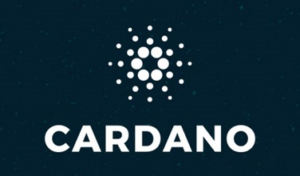Cardano and Bitcoin are two prominent cryptocurrencies that have been making waves in the digital asset space. Let’s explore the key differences between these two blockchain platforms to help you understand their unique features and potential applications.
Bitcoin, launched in 2009 by an anonymous entity known as Satoshi Nakamoto, is the first and most well-known cryptocurrency. It operates on a proof-of-work consensus mechanism, where miners compete to validate transactions and create new blocks on the Bitcoin blockchain. Bitcoin’s primary focus is on being a decentralized digital currency, aiming to provide a secure and censorship-resistant medium of exchange.
In contrast, Cardano, launched in 2017 by blockchain development firm IOHK, employs a novel proof-of-stake consensus mechanism called Ouroboros. Cardano aims to address scalability, interoperability, and sustainability issues that have been highlighted in other blockchain projects. The platform is divided into two layers, the Cardano Settlement Layer (CSL) for handling ADA transactions and the Cardano Computation Layer (CCL) for smart contract execution.
In terms of scalability, Bitcoin has faced challenges due to its limited transaction throughput, with the network processing around 7 transactions per second. Cardano, on the other hand, has been designed with scalability in mind, aiming to achieve higher transaction throughput through its layered architecture and innovative consensus mechanism.
Interoperability is another area where Cardano shines, with its focus on enabling different blockchain platforms to communicate with each other. This feature can potentially facilitate the seamless transfer of assets and data between disparate blockchains, enhancing the overall interoperability of the blockchain ecosystem.
When it comes to governance, Cardano has implemented a decentralized governance model that allows ADA holders to participate in decision-making processes through a voting system. This approach aims to promote community engagement and transparency within the Cardano ecosystem.
Security is a critical factor in the cryptocurrency space, and both Bitcoin and Cardano have prioritized security measures to protect user funds and ensure the integrity of their respective blockchains. While Bitcoin has a long-standing track record of security, Cardano’s innovative design and emphasis on formal verification techniques set it apart in terms of security features.
In conclusion, both Cardano and Bitcoin offer unique value propositions in the ever-evolving cryptocurrency landscape. Bitcoin remains a pioneering force in the digital currency realm, with a strong focus on decentralization and proven security. Cardano, on the other hand, presents a compelling vision for a scalable, interoperable, and sustainable blockchain platform through its innovative design and governance structure.
Whether you are interested in digital gold with Bitcoin or exploring the possibilities of smart contract platforms with Cardano, understanding the distinct characteristics of each cryptocurrency can help you make informed decisions in navigating the exciting world of blockchain technology.

